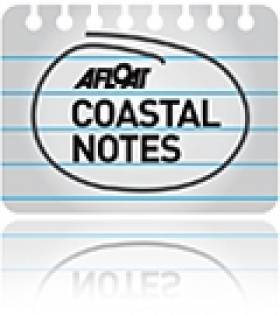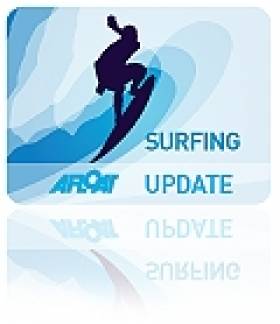Displaying items by tag: Doolin Point
Surfers Speak Out Over Doolin Point
Local surfers have expressed their dismay over the decision by Clare County Council to approve the new pier development at Doolin Point.
The Irish Surfing Association (ISA) maintains that even the revised plan - accepted by the council's 32 members following previous objections - would result in the destruction of the renowned waves at Doolin Point and Crab Island.
"I am very disappointed with this decision," Neil Cooney of West Coast Surf Club told Surfer Today. "A great deal of work was put into the West Coast Surf Club and ISA submission but it seems that the issues raised were ignored and brushed over."
He added: "If this development is built as now proposed it would be a catastrophe."
Clare County Council Approves Doolin Development
The controversial €6 million deveopment of Doolin Point has been backed unanimously by Clare councillors.
Clare county manager Tom Coughlan had recommended giving approval for the revised plan, which was submitted after surfers expressed concerns over the impact of the original scheme on waves in the area.
The scheme has already received support from the Doolin Coast Guard Unit and local tourism and business groups.
But according to The Irish Times, the Irish Surfing Association (ISA) maintains that even the amended plans – which move the new pier 25m further away from the surf – would destroy the "world renowned" Crab Island and Doolin Point waves.
The ISA and West Coast Surf Club have warned the council that loss of the waves could cost up to €33 million per year in revenue generated by surf tourism in the area - a concern backed by Fáilte Ireland.
The Doolin Point pier project must be completed by the end of this year in order for the council to draw the €6 million in Government funding required.
Coastguard Calls for Doolin Pier Go-Ahead
The Doolin Coast Guard Unit has urged Clare County Council to continue its €6 million development plan for Doolin Point.
The pier plan has faced opposition from surfers who argue that the development will ruin the popular waves in the area.
The Irish Examiner reports that in the latest submission to the council, the Doolin Coast Guard Unit supports the development, claiming the current pier is "regularly over-congested" in peak tourist periods.
"This, in turn, can make it very difficult for our members to launch our boats in an efficient manner where time is of the essence," states the unit's officer in charge Mattie Shannon.
A separate submission by Doolin Tourism and Doolin Community Harbour Co-op, backed by 150 signatures from locals, called on Clare County Council to go ahead with the plan.
They dismissed surfers' concerns, stating that "the proposed pier and breakwater will not create a back wash effect" on the surfing waves at Crab Island and other areas.
The Irish Examiner has more on the story HERE.
Surfers Stand Strong on Doolin Point
Irish surfers have won their first battle against the development of Doolin Point in Co Clare, site of one of the country's top wave spots.
A planned council vote on proposals for the €6 million Doolin Pier development was halted last week after concerns were raised by the surfing community both at home and abroad, Surfer Today reports.
The council intends to lodge a new planning application for a smaller development 25 metres further away from the shore that is intended to have less impact on surfing conditions. A public consultation on the proposed development has also been suggested.
"It is vital that we do not lose the €6 million in funding, but we also have to make sure that the integrity of the waves are protected," said Councilor Martin Conway.
Doolin Point is considered one of the top wave spots in Europe, with significant tourism potential for the Irish economy.
































































